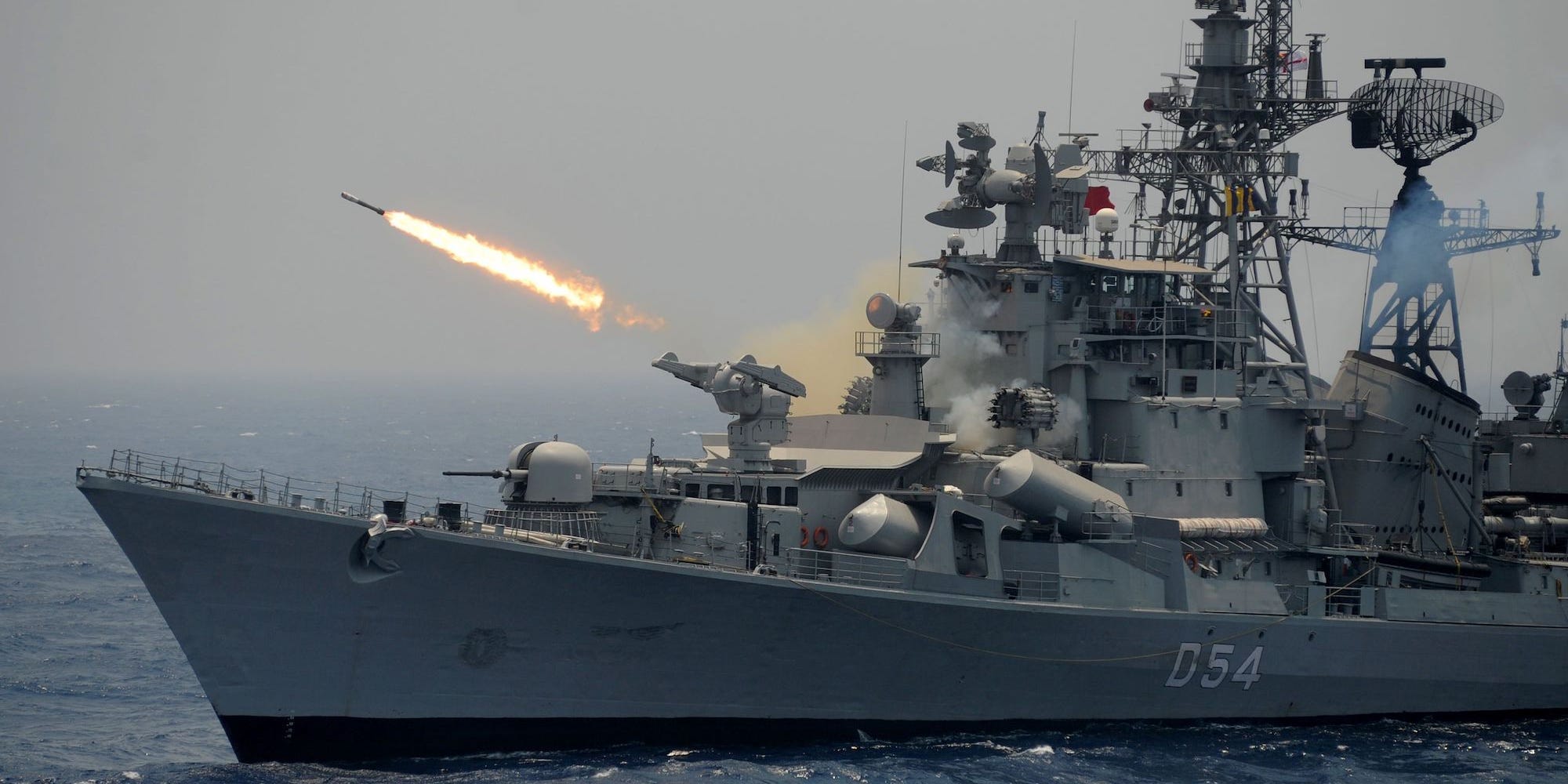
ARUN SANKAR/AFP via Getty Images
- A months-long clash between India and China on their Himalaya border has dramatically increased tensions.
- But the growing rivalry between the two Asian powers is also likely to play out in the Indian Ocean.
- China's navy is capable and only getting bigger, and India is trying to catch up.
- See more stories on Insider's business page.
Last year, an all-out brawl between Chinese and Indian troops along the disputed Sino-Indian border killed 20 Indian and at least four Chinese soldiers.
The medieval-style battle in the Himalayas showed that the countries' rivalry is entering a new phase of intensity.
"China is definitely factoring larger and larger in India's defense strategy today," Timothy Heath, a senior international and defense researcher at the Rand Corporation think tank, told Insider.
The military focus of that rivalry has primarily been on the ground, as reflected by the buildup in the Himalayas, but another area is growing in importance: the Indian Ocean.
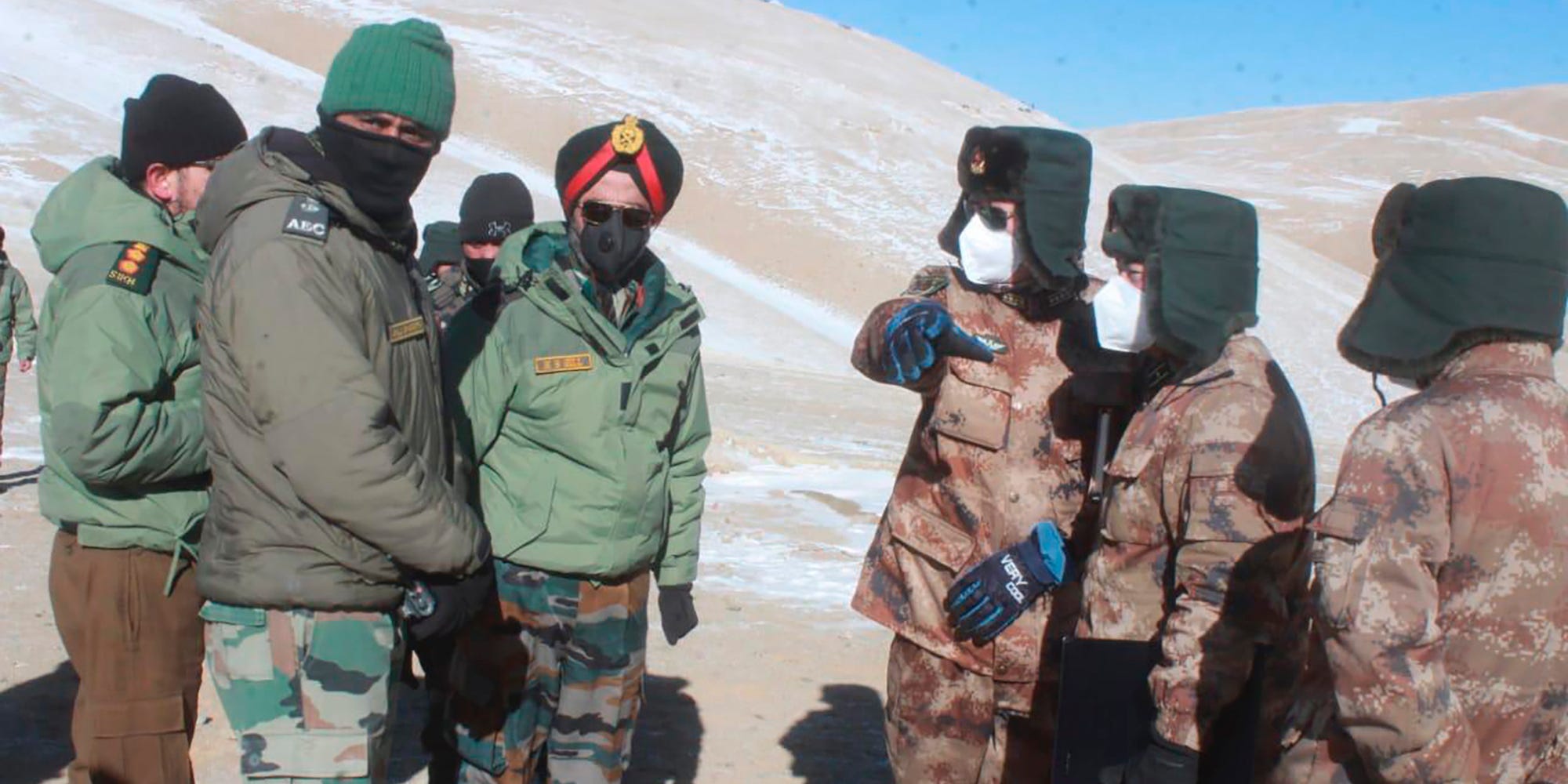
Indian Army via AP
With some of the world's most important trade routes running through it, the Indian Ocean's value is hard to understate, which China has already recognized.
"Given its importance for China, it's pretty obvious the Chinese are elevating in priority the security needs for the maritime silk road," Heath said. "That means India has to be ready for possible situations involving China."
But Indian dominance in its home waters is far from assured. While India's navy has some advanced capabilities, China's People's Liberation Army Navy, or PLAN, is substantially larger and more sophisticated.
With the rivalry entering a new phase, India is trying to catch up.
Outnumbered at sea
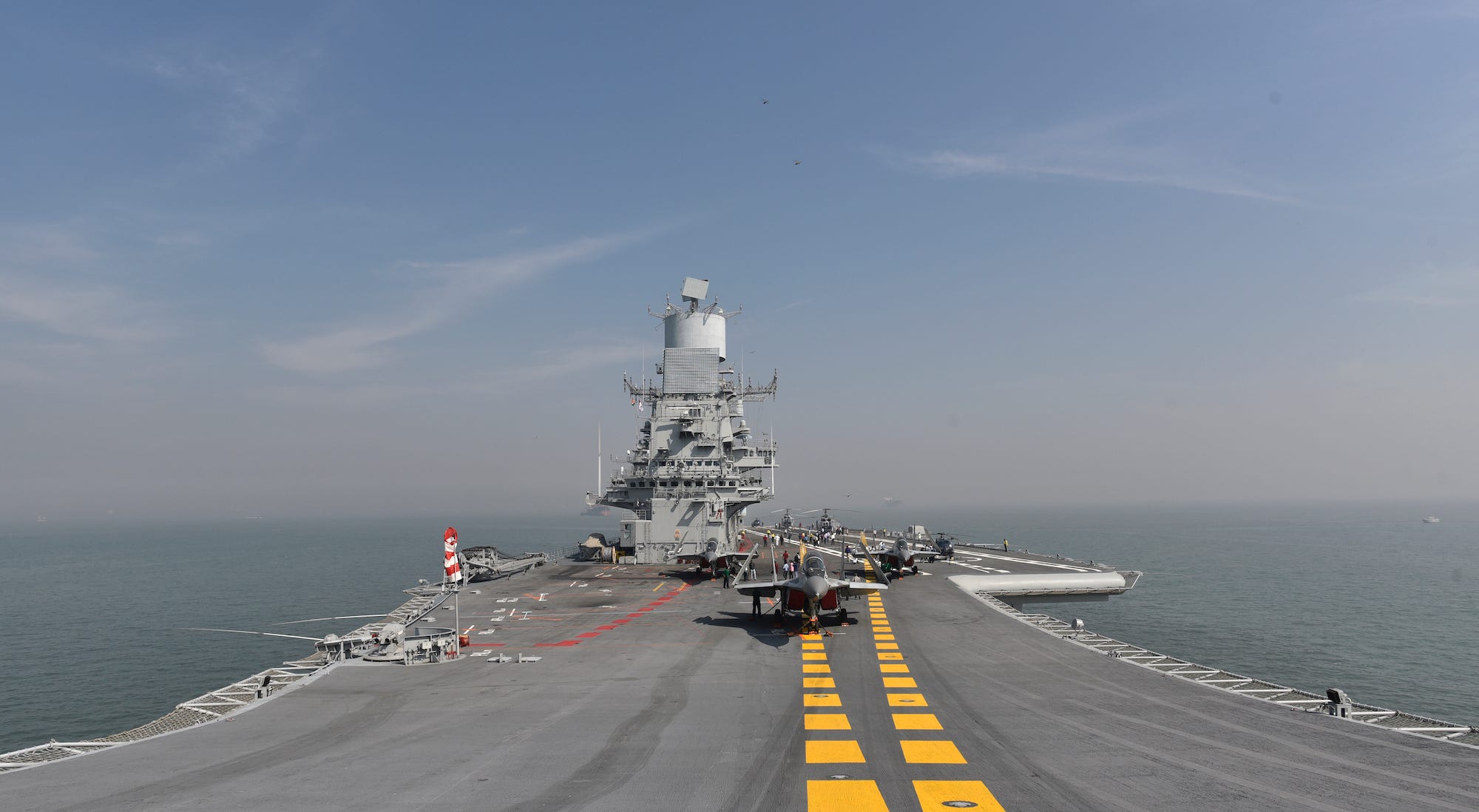
Anshuman Poyrekar/Hindustan Times via Getty Images
The Indian navy isn't small or weak. Its primary combatants include 10 destroyers, 13 frigates, 17 submarines, and one aircraft carrier.
A number of India's warships, like its Kolkata-class destroyers and Shivalik-class frigates, were commissioned within the last decade and have stealth capabilities.
Some Indian ships have modern vertical launching systems and are armed with Russian and Israeli anti-ship and anti-aircraft missiles. India's navy also has the BrahMos supersonic missile, a joint Indian-Russian design that is one of the fastest missiles in the world.
Two of India's submarines are nuclear-powered: one attack submarine (SSN) on loan from Russia and one Arihant-class domestically designed and built ballistic-missile submarine (SSBN) - the first SSBN for a non-permanent member of the UN Security Council.
India expects to commission a second Arihant SSBN and a second aircraft carrier (also domestically designed and built) within the year. But the Indian navy is outnumbered and outclassed by the PLAN.
Chinese ships are "largely composed of modern multi-role platforms featuring advanced anti-ship, anti-air, and anti-submarine weapons and sensors," according to a 2020 Pentagon report.
By comparison, India is "still quite a way behind the Chinese in their warship development," Heath said. "The Chinese have certainly developed some very impressive platforms, and the Indians are really trying to catch up."
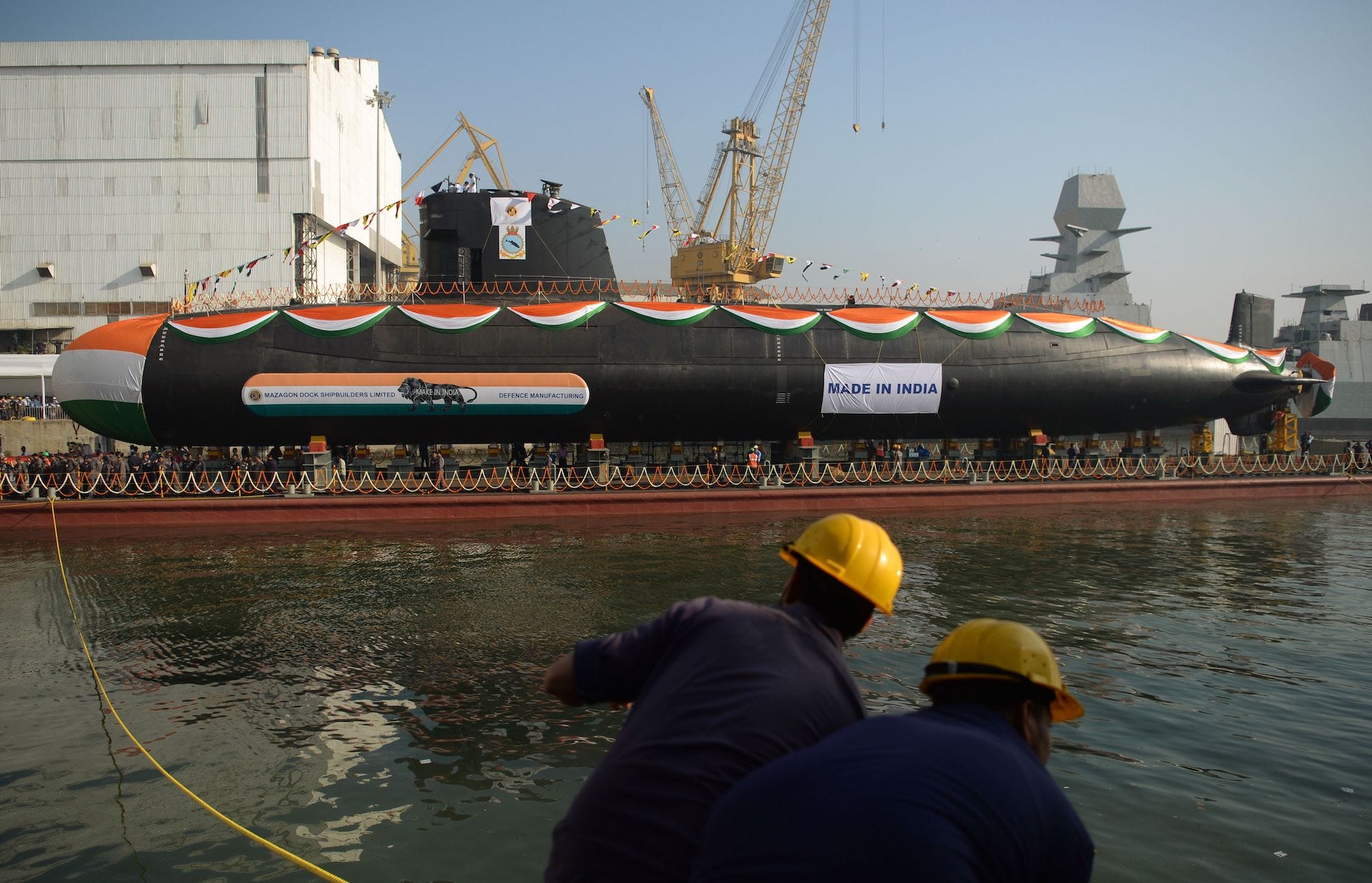
PUNIT PARANJPE/AFP via Getty Images
The Indian navy's primary fighting vessels are outnumbered by the PLAN's South Sea Fleet alone, which has some 11 destroyers, 19 frigates, 22 submarines (including two SSNs and four SSBNs), and one aircraft carrier. The PLAN, now the largest navy in the world, can draw on even more vessels from its two other fleets.
To address the imbalance, the Indian navy plans on acquiring a number of new and advanced vessels, especially nuclear-powered and diesel-electric submarines.
Two more Arihant-class SSBNs are in production and are expected to join the fleet by 2025. Three more larger SSBNs from the new S5-class are also being planned.
The Indian navy also hopes to build six Project-75 Alpha-class SSNs and to replace its leased Russian SSN INS Chakra (which will be returned soon) with another leased Akula-class SSN by 2025.
Six new Project 75I-class diesel-electric attack submarines have been delayed but could start entering Indian service by 2030.
A third aircraft carrier, INS Vishal, is planned to replace the aging INS Vikramaditya. The new carrier, not expected to be completed before 2030, may be based on the UK's Queen Elizabeth-class supercarrier.
Seven brand-new Nilgiri-Class stealth frigates are also under construction, and four Admiral Grigorovich-class frigates, two built by Russia and two by India, are also expected to join India's navy before the end of the decade.
China's 'string of pearls'
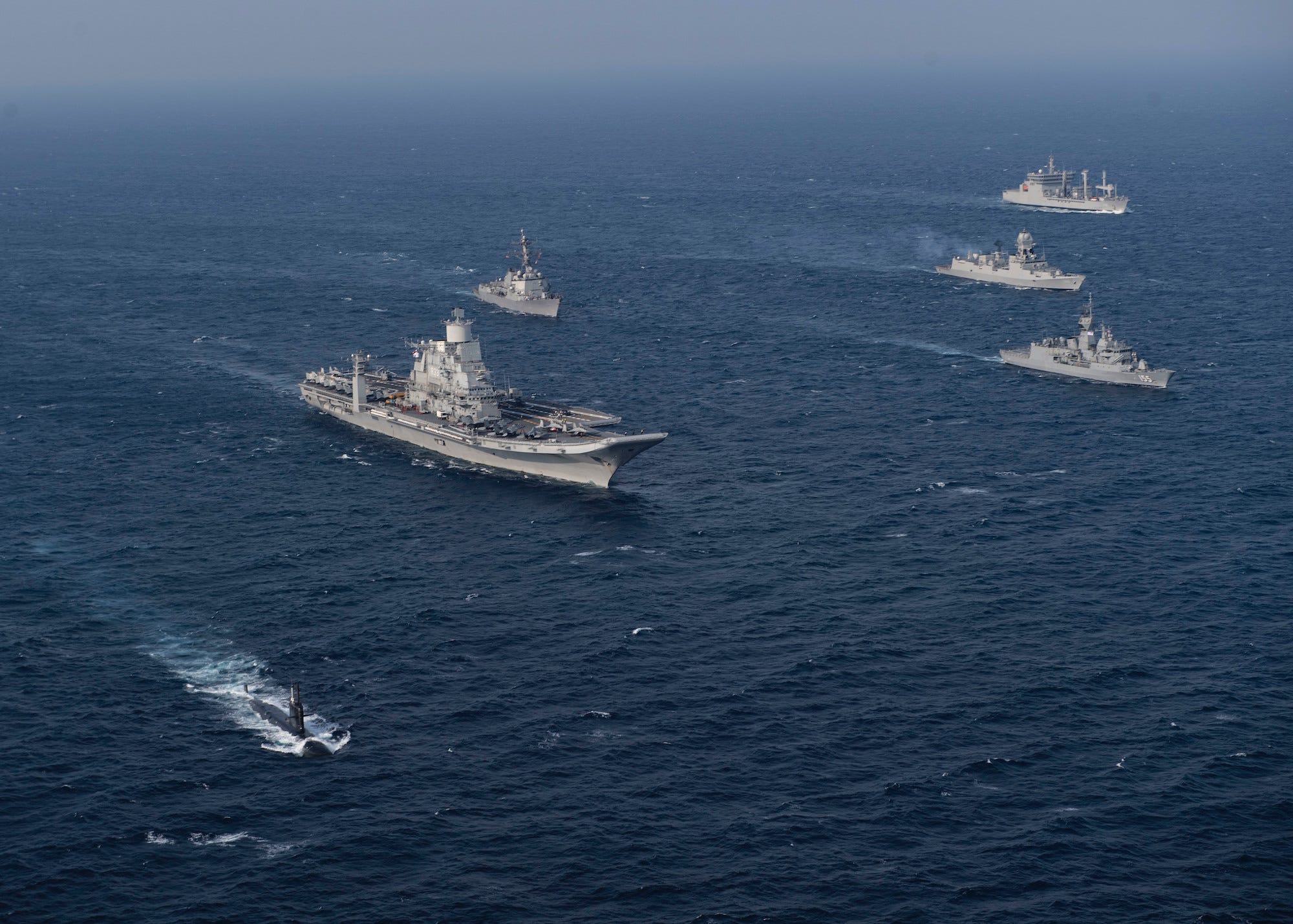
US Navy/MCS3 Elliot Schaudt
There is little doubt in India that the new vessels are needed. Although China is relatively far from the Indian Ocean, it has ramped up its activity there.
Over the last few years, China has taken control of ports across the Indian Ocean that have the potential to support the PLAN - a network that has been called China's "String of Pearls."
"People have been theorizing about the so-called String of Pearls for years," Heath said. "We are actually starting to see some evidence of the Chinese implementing something along these lines."
China has taken control of a port in Sri Lanka, is building naval facilities in Pakistan, and is pursuing port projects in Myanmar, Bangladesh, and Tanzania.
China already has a military base in Djibouti, but other "pearls" appear to be primarily for civilian use.
That doesn't mean those facilities couldn't be used to support PLAN vessels. A number of Chinese ships and submarines have already docked at Sri Lanka to refuel and resupply. Sri Lanka has since denied Chinese requests for other warship port visits due to Indian concerns.
"The Chinese are not interested in building full-fledged bases in the US model," Heath said. "These are facilities that primarily offer refueling, repair, and replenishment to passing warships."
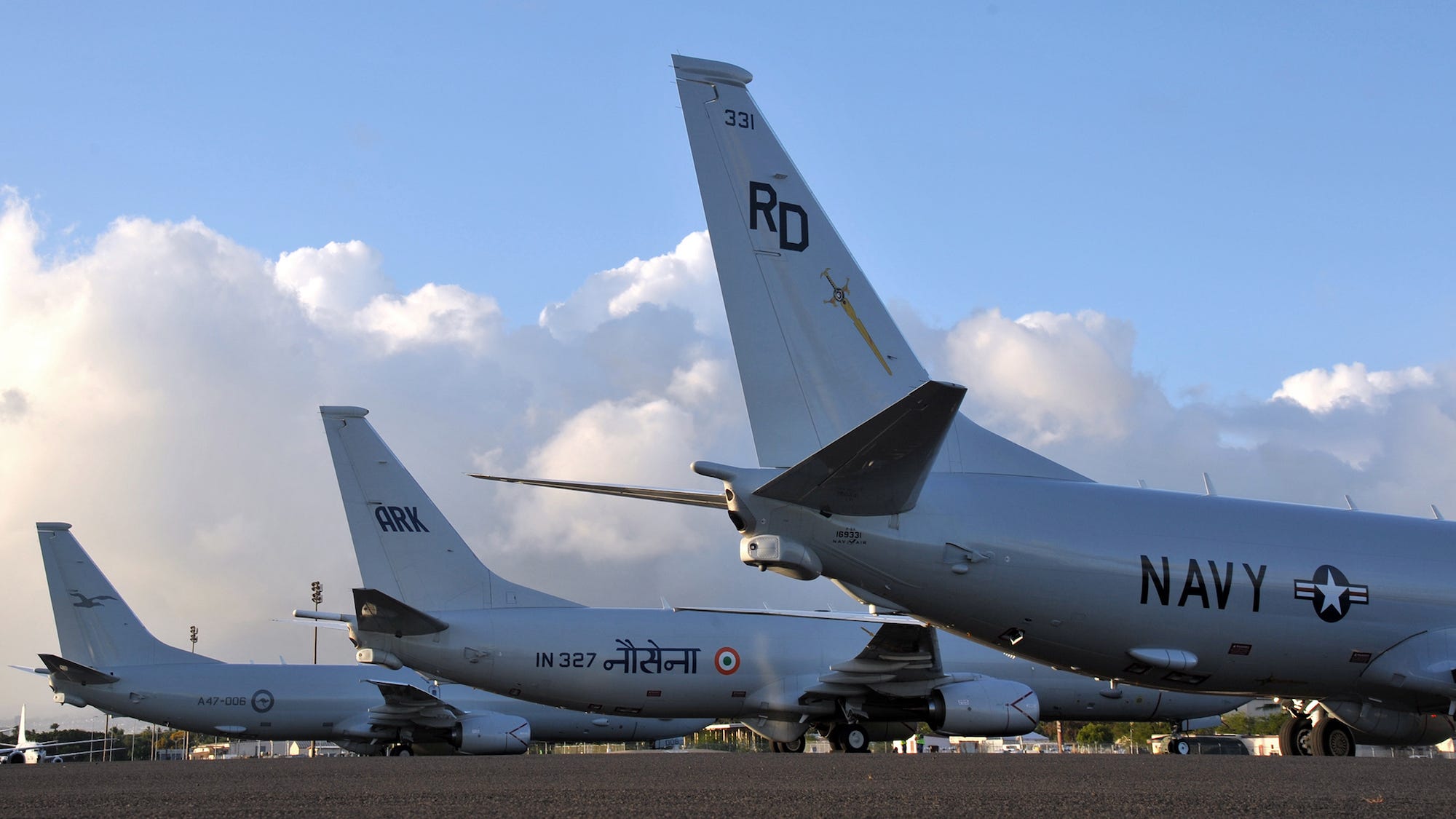
US Navy/MCS1 Kevin A. Flinn
India does have a few advantages over China. As the region is its backyard, it will always be able to bring more to bear against threatening Chinese vessels, such as land-based aircraft and anti-ship missiles.
India also has its own overseas outposts. It has set up radar stations for maritime surveillance in Sri Lanka, Seychelles, and Mauritius; it's constructing facilities on the Mauritian island of North Agalega, and it's pursuing military facilities elsewhere in the region.
India also controls the Andaman and Nicobar Islands, strategically important islands on the Indian Ocean side of the Malacca Strait. India has beefed up its military presence there, and some advocate allowing partner countries to have a presence there as well. (A US Navy patrol plane has already refueled there.)
Despite the government's renewed attention, India's navy still has a ways to go. Most of its new ships and submarines will not be fully operational until the end of the decade at the earliest, and its budget is still smaller than that of India's army or air force.
India's navy will also have to compete with the considerable attention that remains focused on India's land borders, where New Delhi also has to worry about Pakistan, the rival it has focused on almost exclusively since independence.
But the rivalry with Pakistan also has a naval element. The Pakistani terrorists who carried out the deadly 2008 attack in Mumbai arrived by sea, and Islamabad, which is a Chinese military partner, is modernizing its own navy, including with Chinese submarines and drones.
